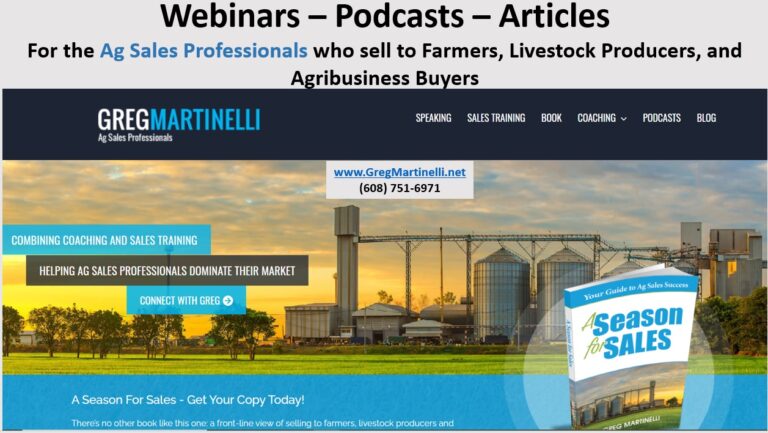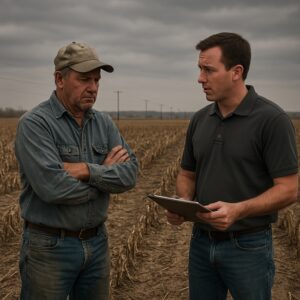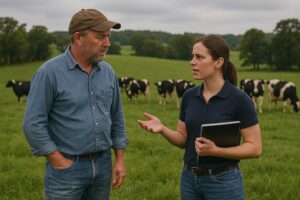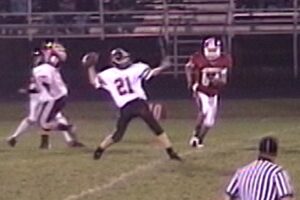Are you stuck in the weeds or too lofty to understand the details?
Then you need an Altitude Adjustment!
Think back to your last several sales calls.
- Did you get stuck in the weeds in one area?
- Did you only discuss big-picture topics and never get down into the details of actually doing any of them?
- Did you go into the call with a plan to sell but got ambushed by a product or service complaint?
- Did you disregard your customer’s questions or complaints in order to stick to your agenda of topics?
If you’re like me and many of the salespeople I coach, it happens. We may not intend for it to happen, but it happens. When a customer is upset as in a customer complaint, we become so accommodating that we let the topic consume the entire sales call. Stuck in the weeds, we never get to our other topics.
On the other hand, I see salespeople that get hit with an objection, but never come down from the big picture and deal with it. Their product might not have a feature or benefit the customer wants. Their delivery locations and times are not a fit. Credit terms or technical support might be a problem. Instead of digging into the objection, they just blow past it and continue to promote other features or benefits. Never addressing the objection.
This is especially a problem when there are multiple customers in a sales call. Every additional person changes the dynamics of the sales call. I’ve had grandpa derail a discussion on grain marketing as he kept bringing up historical references that had nothing to do with the topic that day. I’ve had two buyers for an Ag retailer get into an argument with each other in the middle of my presentation on how we were going to service their stores. In past blog’s, I wrote about my My Second Worst Day of Selling Feed and My Third Worst Day of Selling Feed. These were major customer service issues that required the sales team to be down in the weeds dealing with the crisis. We really couldn’t focus on anything else as this situation was over. You really can’t sell feed when your trucks or plant can’t make it and deliver it.
Here are some things to think about:
- The Parking Lot: I love the parking lot concept. Many years ago, a very adept sales trainer was presenting and several of us kept straying off topic. Our issues were legitimate, but our instructor wanted to get through the main points of the training material before time ran out. So, she posted a flip chart sheet on the wall and wrote “Parking Lot” at the top. Anytime one of us strayed, she would put it in the Parking Lot. This eased our mind to know we would eventually go back and address our issues.
- Map your sales call during pre-call planning: This is critical and so hard for salespeople to do. We love to wing it. The problem with winging it is just like a bird that is soaring, the wind will take you in any direction it blows. However, mapping your call allows you to plan those areas where you want to get into the weeds and those areas where you need to pull back and discuss the big picture.
- Vary and adjust your altitude: Too much of either will reduce your effectiveness. I like to watch late night hosts for a lesson in altitude. The greats are gone – Johnny Carson, Leno, Letterman, but now we have Jimmy and Jimmy. Watch how they conduct their interviews with their guests. They are skilled at asking about a big picture topic and then they get down into the weeds by digging into the details. If the detailed discussion isn’t funny (their objective), then they pull back and ask another big picture question.
- The big picture sets the course: This is where you get approval from your customer to dig into the weeds. This is where you determine if the customer wants to go down the same path you want to go down. On a coaching ride along, the salesperson I was with was making a second call on a producer to sell him a new line of seed. The salesperson had called on this producer several weeks earlier for the first time. He did a good job of digging in and convincing the producer he should try his seed. The producer asked the salesperson to quote some prices and he would consider it, which the salesperson did. Calling back, the salesperson asked for an appointment to line up some seed varieties and the producer agreed. That was the sales call I was on. However, we started the sales call out way down in the weeds. The salesperson began by pulling out the variety book and he had certain seeds selected. Initially, the producer didn’t talk much. About 15 minutes into the salesperson’s presentation, the producer finally stopped him. He informed us that he was not going to make the change. The salesperson needed to start with the big picture to gain approval to get into the weeds.
- The Devil is in the Details… So is the Solution and the Sale:
You either have to know the details or know someone who knows the details. Many salespeople get confronted with trucking or accounting issues on a sales call and don’t know enough about their own company to solve the issue. While it’s ok if you don’t know every aspect of trucking, production, and accounting, however, you need to know enough.
If you get multiple complaints on one particular area, then get good at helping customers understand that area. One company I know had the world’s worst invoicing system. You had to be a CPA to figure out what the customer was being charged for and what they owed. “How often do customers complain about invoicing and statements?” I asked. “Constantly” was the sales team’s reply. After a day of riding with several salespeople, I asked the accounting manager, “Ever consider changing the invoice system to something more user-friendly?” “No, that would be too big of a project,” was the reply. “Ok,” I said, “Next Tuesday, we are going to have the sales team in here for about two hours. I’d like for you and your department to hold a training session with the team on how to read an invoice. Could you also provide a little cheat sheet of terminology, cut off times, etc.?” And we did. It wasn’t a great solution but it did speed up discussions on sales calls as the salesperson could now handle most accounting questions right there when the customer asked.
- DISC style matters: If you are not familiar with DISC, you should be. So, get smart on it and then this will make sense. You need to consider both your DISC style and your customer’s DISC style. In general, the two polar opposites on big picture vs. details are the I-Influencer and the C-Conscientious. The I-Influencer loves the big picture and assumes someone else will work out the details. The C loves details, how it broke, how it is being fixed, who is doing the fixing and how will we prevent it in the future. An important step is to determine where you and your customer are in these areas so you stay on track and come up with realistic solutions.
Take a few minutes and think through your last few calls to determine where you hang out on your sales calls. If it’s too far into the weeds or too lofty in the big picture, you need an altitude adjustment.
For more information on Ag sales training, coaching or business development, contact Greg Martinelli at Ag Sales Professionals, LLC at (608) 751-6971. Email is Greg@GregMartinelli.net Web site is www.GregMartinelli.net




